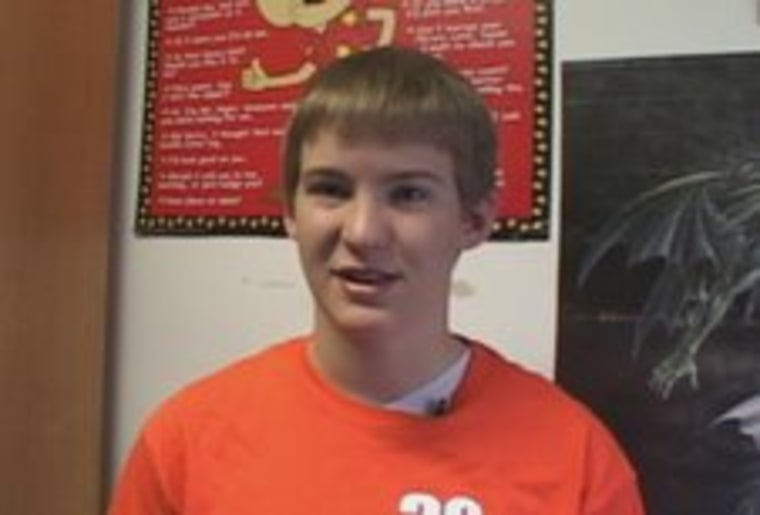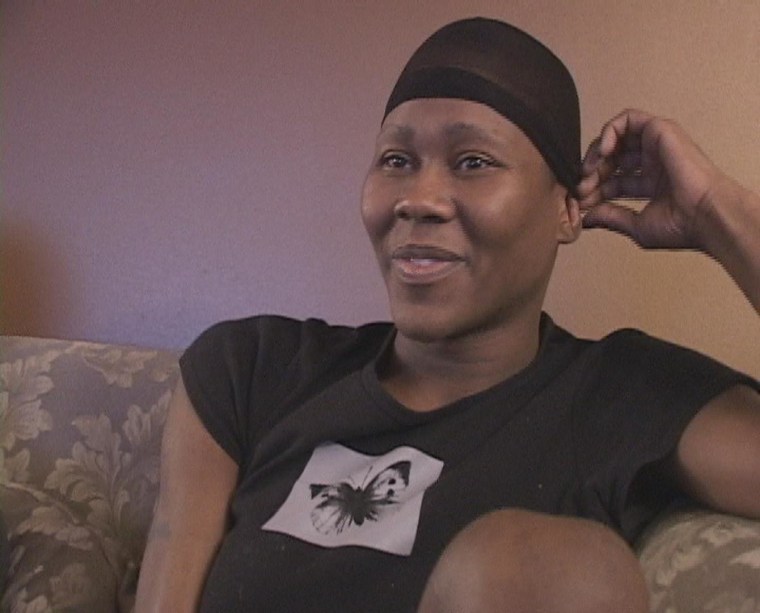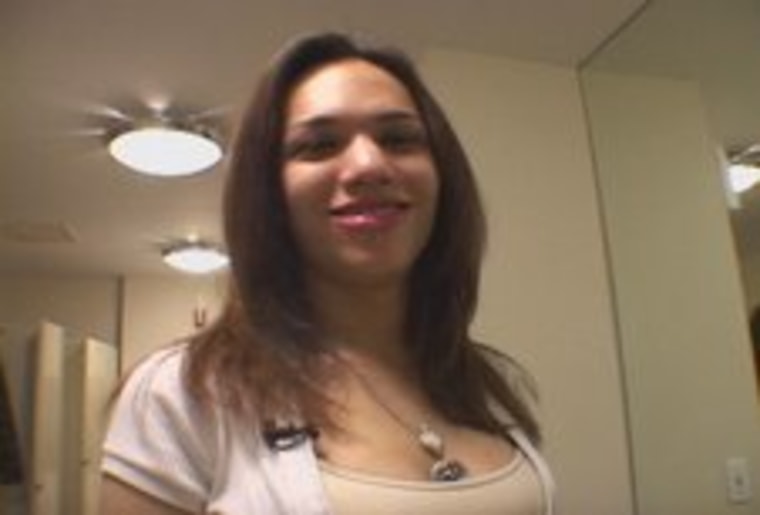In almost every way, Jake is a typical 16-year-old boy.
He plays drums in a band, he’s learning to drive, and he’s very close to his parents. But there is one thing that differentiates Jake from other teenage boys.
He began his life as Julia.
“I knew I was different, probably when I was like 5 because a bunch of my friends growing up were all females,” Jake said. “But they would all do things like play Barbies and play house and, you know, typical girl stuff. And they’d always say to me, ‘Okay, you’re gonna be Ken’ or ‘you’re gonna be the dad.’”
As far back as Jake can remember, he always experienced conflict regarding gender. When he was 4, he told his mother Peggy that there was a boy living inside of him. At age 11, he began to have crushes on girls and thought he might be a lesbian. But at age 13, when he met a female-to-male “transman,” he finally found someone with whom he could identify.
“I was like, you know, he’s a guy but he’s kind of like a girl,” Jake said. “So I started to talk to him a little bit and I found out he was transgendered. And I didn’t know what that was until I went home and — thank god for the Internet — I looked it all up … and I was like, ‘Wow, you know, I kind of feel like this.’”
Jake’s parents were supportive when he came out to them as transgender and allowed him to begin transitioning to male when he was 15.
“Do I wish it could be different and that your life could be a little easier? Of course,” said Jake’s mom Peggy. “As a parent, that’s what you hope for your kid. You want their life’s path to be as simple as possible. But it was what it was.”
Jake and four other young tansgender people shared their story for the MSNBC documentary “Born in the Wrong Body.” Their last names have been omitted to protect their privacy. Some have had an easier time coming to grips with their gender than others; some have opted for gender reassignment surgery, while others don’t feel it's necessary; some have been supported by their families from the beginning, while other have had to turn to “alternative families” for support. But all the young men and women featured in “Born in the Wrong Body” say they knew very early on that the gender they feel in their mind does not match the gender expressed in their physical appearance.
‘Conflict arises’
Cris Beam wrote "Transgender: Love, Family, and Living the T with Transgender Teenagers" about her experience teaching transgender teenagers in Los Angeles and becoming a foster mother to one of them.
“The trans people that I know, they all know from a really young age that they are the gender that they are inside. And then they also know that that doesn’t match the body that they were born into,” Beam said. “And when the problems come in, is when families or teachers start telling them, ‘Oh no you can’t play with that.’ Or, ‘That’s not your bathroom.’ Or, ‘You can’t wear that dress.’ And conflict arises.”
For 21-year-old Tayler, born Travis, that conflict became too much to handle. At 14, he tried to castrate himself with a pair of scissors and a knife.
“It almost felt like a detachment type thing, like this is a foreign object that shouldn’t be there,” she said. “Don’t’ try that at home.”
At 15 and 16, Tayler attempted suicide several times, finally ending up in a psychiatric hospital. It was while she was hospitalized that Tayler finally admitted she was transgender. It took her five years to get to the point where she is living full-time as a woman. Now Tayler takes a daily dose of female hormones and is attending Clemson University.
‘I feel like I had a child die’
Being transgender has been hard on Tayler and her family. While her parents are supportive, they’re also overwhelmed by a profound sense of grief.

“I feel like I had a child die,” Tayler’s mother said.
“It’s like, you know, almost as if my previous self doesn’t exist anymore,” Tayler added.
Tayler’s parents are still getting used to the idea of having a transgender child, but they believe if they had tried to keep Tayler a boy, their story could have had a tragic ending.
“The thought of our child trying to kill himself over this,” said Tayler’s dad, “and imagine all of the people who don’t go through the journey like we did and are successful at suicide …”
The question of gender reassignment surgery
Tayler is anxious to have sexual reassignment surgery one day.
“I would probably eventually get a rhinoplasty and maybe like a chin reduction, but I really don’t know when,” Tayler said. “I originally wanted to do the face first, because at this point I think that is almost more important to me. But it looks like I probably will get the surgery ‘down there’ first.”
Genital surgery to go from male to female is fairly straightforward — create a vagina by inverting the penis. But going the other way, creating a penis for female-to-male “trans men” is still relatively primitive.
“It’s just not there in terms of cosmetic appearance and function,” said Simon Aronoff, a female-to-male transgender activist. “Some trans men do opt to have it to make themselves feel more complete.”
Those who are desperate to change their look, but lack the means, sometimes turn to dangerous measures.
One highly risky practice involves getting injected with industrial-grade silicone by someone other than a certified plastic surgeon.
“What happens is, you’ll hear about a doctor’s wife from Florida, or you know of somebody who’s a vet who knows how to do it or something like this,” Beam said. “And she’ll show up and she’ll rent an apartment for two days, and she’ll do, you know, a whole bunch of young women.”
The practice is called “getting pumped.”
“It’s really dangerous,” Beam said. “But it’s cheap, and it looks good. So they’re young and that’s why the do it.”

Alex is the first openly transgender student in the history of the University of Virginia, and he has his own way of dealing with his body. He hasn’t started hormones yet and he hasn’t had any surgery, all of which leaves him, physically, still female.
Because of this, Alex plays Rugby on the women’s team.
“For him to play on the men’s team would be suicide,” said his coach, Nancy. “Just because he’s built still like a girl. He’s got girl muscles and girl shoulders, and he would get murdered.”
But each morning, Alex goes through a routine to mask his feminine features. He binds his breasts every day, and packs. A packer is a silicone prosthesis used by transmen to create a bulge in the crotch.
“One time I accidentally left it at home after coming home for the weekend,” Alex said. “So I immediately called my sister as soon as I realized saying, ‘Please god, if you see any clothes on my floor, pick them up, throw anything that is associated with them into my closet. I will tell you later.’
“She asked me whether I had any drugs stashed in my pants that I needed to get rid of. And I didn’t. But my mom actually found them first. And she never mentioned it, thank god, because that’s an awkward conversation.”
Alternative families
The decision about when to come out as transgender can be extremely difficult and painful.
“Transgender kids form these alternative families with one another often because their own biological families, or families of origin, have thrown them out,” Beam said. “Or their own families have become so intolerable that they run away.”

Deasja, who was raised as a boy by her church-going grandparents in New York City, became estranged from her family when she came out as transgender as a teen. She found another family of sorts in the underground scene known as ballroom, described by those who know it as a kind of national sorority with chapters all over the country.
“Except that in a sorority … it’s the elite, it’s the select,” said New York Times reporter Guy Trebay who has covered the ballroom scene for more than two decades. “And here it’s the opposite. I wouldn’t say they’re misfits. No, I would never say that. I would say that they’re people who don’t have another outlet.”
Ballroom houses are named for famous fashion houses, like Prada, Moschino, and Dior. Most kids don’t actually live in these houses; they just come to hang out with their ballroom friends whom they call “brothers and sisters.”
At the House of LaPerla, which Deasja is a member of, most refer to founder Juan LaPerla as “father.”
“They are trying to find a support system outside that will accept them for who they are,” said LaPerla, a New Jersey entrepreneur who is gay but not transgender. “So they find each other, they network, and we all become one big family.”
The ballroom scene isn’t just a safe haven. It’s also a party scene revolving around events that feature fierce competition in categories like “Butch Queen, “Femme Queen,” and “Miss Thing.” The parties begin in the middle of the night and last until morning.
“It seems to me like the number one lesson in the ballroom scene is one of acceptance,” Trebay said. “That’s the baseline – ‘there is a place for me’ – for these people, and for anybody.”

Like many transgender teens, Angelika, 21, felt like she needed to look beyond her family for support. One of her closest confidants is Katherine Linton, a lesbian filmmaker. She calls Katherine her “papa bear” and sees her as a parental figure.
“What I discovered with many of these kids, they don’t have adults in their life,” Linton said. “So if anything, she calls me Papa Bear because I’m hard on her. I tell her she’s got to get an apartment, got to work really hard…got to really, because no one’s going to give it to her.”
The dating scene
Angelika encounters one of her biggest obstacles when it comes to dating.
“Telling a guy that you’re interested in, and that is interested in you, that you’re trans sucks,” said Angelika. “I just have to say that as bluntly as I can. It sucks.”
Surprising even herself, Tayler has found romance.
“I don’t see myself as very attractive,” she said. “I just kind of assumed that no guy would be interested in me.”
Tayler’s boyfriend Calvin is a graduate student at Clemson University, where Tayler is a junior. Calvin considers himself heterosexual, and explains his romance with a transgender woman analytically.
“I guess an analogy would be, if you like hamburgers but you don’t like French fries and someone gives you, like, a fast-food combo meal, you wouldn’t refuse the whole meal just because you don’t like fries,” he said. “You can still eat the hamburger and just not eat the fries if you don’t like fries. And so, that’s kind of how I would say it was what I’m doing.”
In finding love and acceptance, Tayler has finally found peace.
“It is a hard journey but I would say it’s worth it,” Tayler said. “It’s definitely been worth it for me. I love my life a lot more than I ever did before. I used to hate my life, but now it’s, it’s actually pretty good now.”
‘No going back’
Dr. Marvin Belzer, the Medical Director of Transgender Services at Children’s Hospital Los Angeles, says the biggest obstacle in treating young transgender people is prejudice in our society.
“The biggest point I think people don’t understand, they think there’s a matter of choice in this,” Belzer said. “And after having dealt with this, and dealt with hundreds and hundreds of patients, the patients we’re talking about are the ones who were born this way. This is who they are. There is really no going back.”
The American Psychiatric Association considers transgenderism a mental disorder, a controversial diagnosis that upsets much of the transgender community.
“It puts transpeople in an awkward situation where, to get the treatments that they need, they have to withstand this medical diagnosis of having an illness,” Beam said.
Beyond coping with the stigma of being diagnosed as mentally ill are the practical ramifications of such a label. Insurance companies often use the psychiatric diagnosis to deny paying for hormones and surgery.
Most transgender patients believe they just want to correct the physical problems they say they are born with, which leads to the question, what makes people transgender?
“There’s the idea of what’s called the ‘hormone wash’ theory which is that in utero, the fetus got washed with extra testosterone which would make a trans boy or extra estrogen which would make a trans girl,” Beam said. “That’s not been substantiated, but it’s an idea.”
“I think trying to find a cause of transgenderism or trying to find a cause of sexual orientation is really going down the wrong track,” Aronoff said. “It doesn’t really matter why people are who they are, it just matters that they are. And that they be treated with respect and are able to live to their full potential.”